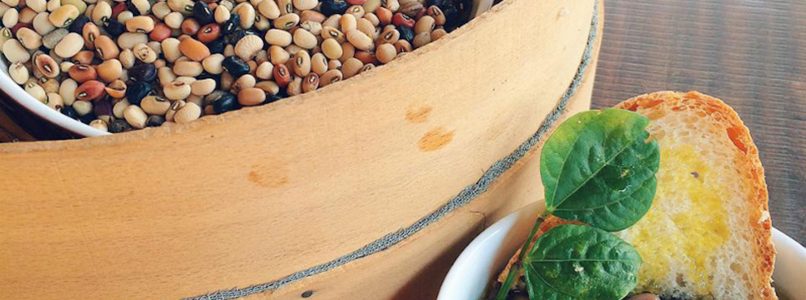It has the appearance of a small, oval bean, and its color embraces all shades of cream, up to black, through salmon and all shades of brown. In the mouth it is tender, buttery and particularly tasty. There Trasimeno bean is a legume that has grown since 300 BC. C., in the areas around Lake Trasimeno, which with its shallow waters creates a sort of thermal buffer for the surrounding lands. Abandoned in the 1950s following the depopulation of those countryside and due to the difficulty of processing, it was rediscovered in the late 1990s and has now become a Slow Food Presidium.
Patrizia Marcelli, of the Bittarelli farm, tells us how it is a legume that has always been present in these lands. "The Fagiolina was already here with the Etruscans, well before the beans we use today were imported from America. It is located in the area of Lake Trasimeno, it is a particular niche product, not very large quantities are made because its processing is difficult .
The Fagiolina del Trasimeno in fact requires unconditional love: no machinery, a lot of attention and above all dedication, because ripening varies with the type of skin of the legume (there are over 50 varieties). "It has always been a staple food for these valleys," he explains Flavio Orsini, contact person for the Slow Food Presidium producers, "especially in times of war, when there was nothing to eat. Once everything had been destroyed, the fields cultivated with green beans were still a salvation because this legume reproduces its pods after only 15 days, thus guaranteeing a food rich in proteins for the poor people. It is a difficult product to grow because its maturation decreases from the end of July to September and you start harvesting every three days, obtaining 1 kg of beans per hour ". A great advantage of the Bean compared to other legumes is its digestibility: the texture of the peel is such that it does not create inflammation inside the intestine, thus avoiding the classic swelling caused by other legumes.
The Trasimeno bean in the kitchen
Given the softness of its skin, this legume does not require soaking or even a very prolonged cooking. The best way to bring it to the table is stewed, like a soup, accompanying it with croutons of toasted bread sautéed with robust flavor extra virgin olive oil and a few sprigs of rosemary. The Fagiolina should be boiled in plenty of water for 45 minutes, adding salt only when cooked. Also perfect together with fish such as redfish and gurnard in a soup, or served on croutons along with baked pepper fillets.
Andrea Berton's recipe
The starred chef Berton also used the Trasimeno bean, appreciating the tenderness and particular digestibility of this small bean. His plate, a bed of Fagiolina with roasted octopus tentacles, mixes the savory freshness of the octopus with the sweetness of the legume. It can be served as an appetizer or a main course. The recipe is simple and can be replicated by everyone!
Trasimeno bean and roasted octopus
Ingredients
1 octopus of 600 g, 200 g Trasimeno bean, 30 g of carrot, 100 g of extra virgin olive oil, 30 g of celery, 20 g of white onion, 1 aromatic bunch, 500 g of chicken broth, a pinch of salt, pepper, lemon paste, fish mayonnaise.
Method
Finely chop the vegetables and brown them in a saucepan with extra virgin olive oil. Add the aromatic bunch, the bean and sprinkle with the chicken broth. Cook over low heat for 20 minutes. Place in a container and let cool. Tie with fish mayonnaise, extra virgin olive oil and season with salt and pepper. In the meantime, clean and wash the octopus and cook it in the oven at 98 ° for two hours. Once cooked, let it cool and then cut the tentacles that you will roast on a tray in the oven. Once roasted, make up the dish by placing the bean mixture in the center and the octopus tentacles on top. Finish with a few leaves of endive and a little lemon paste, which you will prepare by blending 30 g of untreated lemon peel, 100 g of sugar, 50 g of honey, 60 g of peeled and seedless lemons and 80 g in a mixer. of powdered sugar. Once everything is amalgamated, pour the lemon cream into a sterilized jar and keep it in the fridge for 20 days.










